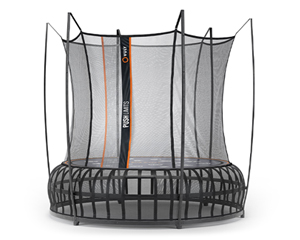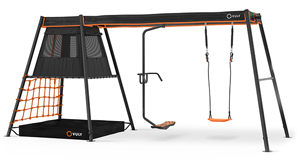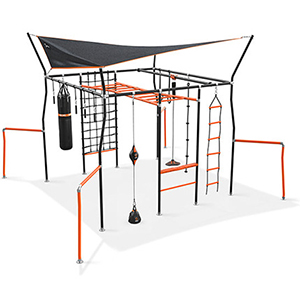Combining athleticism and grace, competitive trampolining has been steadily gaining international recognition over recent years and is now an Olympic sport.
Formally referred to as trampoline sports, rebound sports, and trampolining, these trampoline-based competitions feature highly skilled athletes performing incredible acrobatic feats. Individual events can greatly vary --- presenting some very unique challenges to competitors.
Athletes are judged by their ability to land these stunts safely and effectively without losing their balance. These demands require them to be extremely healthy, focused, confident, and capable of memorising challenging routines.
Competitive trampolinists often get into the sport as children. As children are naturally very limber, frequently slim and confident in their athletic abilities, participating in trampoline gymnastic events is a great way for children to develop strength, muscle control, and motor skills. As children mature and become more skilled at trampolining they may choose to make competitive trampolining a lifelong hobby.
Competitive Trampolining Stunts
Competitive trampolining routines typically consist of gymnastic-based stunts. There are three basic moves in a trampoline competition:
The first is aptly named the straight, and is performed with the legs and neck in a straight position while the arms are down at the sides.
The second move is called a pike. Performed with both the legs and the arms arranged in a 90-degree angle to the body, this move is considerably more difficult and demands much more flexibility.
The arms and the legs frequently touch the hands and feet while the athlete is in this position. The last move is called a tuck. A tucked position is performed with the arms and legs bent. The knees are pulled into the chest and the arms are securely wrapped around the legs, preventing further movement—much like a cannonball.
These moves are combined with other feats, such as rotations, somersaults, and twists. The combination of motions and moves provide an endless amount of creativity in creating the routines and are easily adjusted for difficulty.
Gymnastics Trampolines
The long gymnastics trampolines measures 14 feet by 7 feet and their design differs greatly from regular backyard trampolines. Competitive trampolines are in a square shape, rather than a circular shape.
They are composed of sturdier steel frames and stronger surface fabrics, and contain more coils, which give competitors a higher bounce so that they can complete their stunts before landing.
Advances in the construction of materials have now allowed competitive trampolinists to become projected up to 30 feet in the air. These powerful tools are also designed to be lightweight and portable, which makes them much easier to transport. This is crucial for athletes who must frequently travel to get to their competitions, both locally and internationally.
Gymnastics Trampolines & Dress Rules
For safety reasons, tight clothing is required for competitions. Leotards are imperative when competing in events, although many athletes wear close fitting shorts or t-shirts when training.
Loose or baggy clothing could potentially become caught on the trampoline or surrounding areas, which could lead to loss of balance or injury. For extra stability, trampolining shoes with rubber soles are also required. Jewellery, watches, rings, bracelets, and other articles that may pose safety threats are prohibited while competing.
Individual Trampolining Events
Currently, athletes in individual trampoline competitions are required to prepare two or three routines for a panel of judges. One of these routines may involve a compulsory set of skills and stunts that are pre-decided by the panel several weeks or months before the competition.
The skill sets may consist of acrobatic combinations of somersaults, difficult landings, flips, bounces, or twists consisting of tucks, pikes, or straight body positions. The age and skill level of the competitors are taken into consideration before these mandatory skill sets are imposed, although more difficult stunts that are successfully completed receives higher scores.
Each routine must contain ten different skills and must both begin and end with the competitor on their feet. Points are deducted for a low degree of difficulty, sloppy or incomplete moves, poor form, and lack of kinaesthetic control.
Many athletes choose this individual form of competitive trampolining because they are solely responsible for the success of their stunts, rather than depending on the success of their partner. Similarly, any fault during a competition can be attributed to the performer alone.
Synchronised Trampolining Events
Synchronised gymnastics trampoline events are rapidly gaining more attention, and for good reason --- this event is not only much more difficult, but when completed successfully is also very beautiful to watch.
These events require an athlete to not only memorise intricate routines but also to execute them while attempting to become perfectly coordinated with the movements of his or her partner.
Ideally, each athlete will be mirror image of his or her team member. Because of this high degree of difficulty, synchronised gymnastics trampoline events are considered to be the most artistic event in the sport.
In synchronised trampoline routines, two athletes must simultaneously perform identical routines that consist of ten skills. To decrease the risk of injury and accidents, competitors perform these routines on two adjacent trampolines. Each athlete is judged on their independent level of skill in a similar manner to individual competitions.
However, each pairs are also scored for synchronisation. Routines are scored by the degree of difficulty and the consistency of the routine. Fewer points are taken off of the team's score if the pair is rebounding at the same height at the same time.
This competitive gymnastics trampoline event is a seamlessly blended combination of group and individual events and is perfect for athletes who thrive on being part of a team.
Vuly is committed to providing top-quality trampolines and trampoline accessories for the whole family. We provide recreational and competitive trampolines. Our trampolines are tested to the highest standards and designed with safety as the top priority.
For any questions or comments, please do not hesitate to contact one of our knowledgeable team members. Check out our wide selection of trampolines today!
Check out the achievements of our Vuly sponsored trampoline athletes.























































